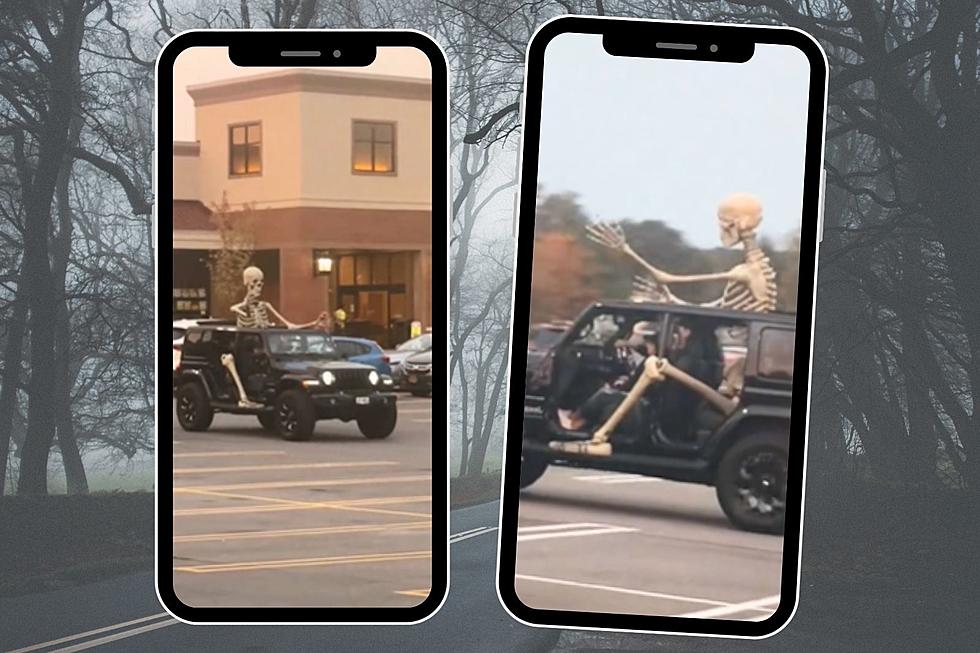
Looking Back to the Future: The History of the Future in Comics
In case you don't have a television or a computer or eyes or cognitive function and hadn't heard, today — October 21, 2015, in case you're reading this... in the future — marks the day that Marty McFly visited when he traveled to the future in 1989's Back to the Future 2: 2 Back 2 Future. (The actual day, and not, as your Facebook friends would have you believe, every single other day of the last ten years.) This movie proved an eerily prescient oracle, correctly predicting such everyday occurrences here in the future as flying cars, the trend of wearing two ties, and the ubiquity of the fax machine.
Comics as a medium, and especially the superhero genre, has always had at least one foot firmly planted in the sphere of science fiction, and, as such, has frequently used elements of time travel and premonition in order to present visions of the future; frequently harrowing visions meant to show just how important the actions of a title's protagonists are.
There are so many comic stories that present a view of a possible future that I couldn't possibly list them all in an article ten times this long (sorry in advance to any Legends of the Dead Earth superfans out there), but here is a quick survey of some of the most notable possible futures in comics.
One of the earliest — and certainly longest-running — possible futures is the 30th century of the Legion of Super-Heroes. First appearing in 1958's Adventure Comics #247 by Otto Binder and Al Plastino, the Legion was a club of kid heroes who, thanks to time-travel technology, got to hang out with their inspiration and hero, the teenaged Superboy of the 20th century. The earliest stories feature a relatively optimistic future, in which Earth's commitment to space exploration leads to a cast full of characters from dozens of different worlds, each devoted to the ideals of the United Planets.
First only making guest appearances in Adventure Comics and other Superman titles, the Legion soon had their own recurring feature in Adventure, then moved to being a backup feature in Superboy before they eventually took over that title. In the time since then, they've been hit by the Crisis on Infinite Earths, jumped five years into the future, rebooted, threebooted, syncretized by Infinite Crisis, and reworked again for the New 52. Despite all these changes, the Legion have remained one of the most beloved franchises in comics.
One recurring plot device throughout the Golden, Silver, and Bronze Ages was to introduce future versions of a title's heroes, either through time travel, imaginary stories, or just taking a peek into a possible future. One of the earliest of these was Brane, the Batman of the year 3000, who debuted in 1944's Batman #26 by Joe Greene and Dick Sprang, beating the Legion of Super-Heroes to the punch of being a 31st century hero by fourteen years. This concept apparently worked so well that they used it again in 1951, when Bill Finger and Dick Sprang introduced Brane Taylor in Batman #67. This one was different because he had red hair and was from 3051, not 3000.
Superman was no stranger to this premise either, with one future version of himself, the Superman of 2965 (sometimes called Superman XX to reflect that he is the twentieth member of the Superman dynasty), appearing in a handful of stories in the mid-'60s. This version, who first appeared in 1965's Superman #181 by Edmond Hamilton and Curt Swan, was named Klar Ken T5477 and usually fought a guy with a huge round green head called Muto. Despite nominally being set in the same year as the Legion of Super-Heroes stories of this time, Superman XX's adventures bore basically no overlap with Legion continuity.
Other creative teams have built on the ideas of these heroic future dynasties, with the culmination perhaps being DC One Million, in which the DC heroes of the late 20th century met the Justice League of the 853rd century, in which the supremely powerful futuristic heroes have spread out to monitor the solar system and have used the ideals of the modern-day heroes to help spread peace and prosperity.
In contrast to the relatively optimistic futures of the Legion and DC One Million stands the world of Earth-AD, or After Disaster, a series of originally unconnected comics that all featured a post-apocalyptic theme that were later woven together into a single continuity with typical Bronze Age fastidiousness. These titles included such disparate titles as the Atomic Knights feature in Strange Adventures, Kamandi, OMAC, Hercules Unbound, Atlas, and a feature that appeared intermittently in DC's various anthology titles known as “The Day After Tomorrow.” The uniting theme of these stories is that they take a look at the world following some unspecified Great Disaster that took place in the far distant world of 1986.
Other popular DC Comic futures include Kingdom Come, which I don't need to tell you about because you've read it and you were probably just scanning this article to make sure I mentioned it, and the world of Batman Beyond, which was originally a separate continuity from the TV show, but which has been increasingly incorporated into current canon in a kind of weird way thanks to the events of such stories as Futures End.
Marvel's futures on the whole tend to be darker than DC's, as can be seen by comparing DC's Legion of Super-Heroes with Marvel's 30th century equivalent, the original Guardians of the Galaxy. First appearing in 1969's Marvel Super-Heroes #18 by Arnold Drake and Gene Colan, this is not the version from the movie, but a collection of heroes and soldiers from various planets who team up to help fight off the conquest of the alien Badoon. Rather than a fun club of teens celebrating their hero like the Legion, the Guardians are a group of guerrilla fighters on the defensive against a seemingly intractable enemy.
Things only got darker with what is perhaps Marvel's best known possible future, from the X-Men story “Days of Future Past,” which envisions a dystopian world in which mutants are detained in internment camps and murderous Sentinel robots roam the country, looking for people to exterminate. As one of the seminal X-Men storylines of all time, “Days of Future Past” has inspired not only a feature film, but also other X-family storylines, including “Days of Future Present,” “Days of Future Yet to Come,” “Days of Future Tense,” and the dystopian future worlds X-Men members Bishop and Cable come from.
In the early '90s, Marvel launched an entire imprint based around the concept of showing new versions of their most popular characters who lived just over a century in the future, in the year 2099. The line was very popular in its first few years, with the initial launch of three titles — Spider-Man 2099, Doom 2099, and Punisher 2099 — soon joined by future versions of the Hulk, the X-Men, the Fantastic Four, Ghost Rider, and more, before the line declined in popularity and ended in 1998. Years later, nostalgia has brought about the return of Spider-Man 2099; who knows about the others?
The end of the 2099 line in 1998 coincided with the launch of a different near-future imprint, called MC2, spearheaded by writer Tom DeFalco. This line was centered around Spider-Girl, which featured the adventures of the daughter of Peter Parker, and was soon joined by A-Next, a next generation Avengers team, and J2, about Juggernaut's son and the flannel shirt he wore around his waist. This more light-hearted look at the future (relative to 2099, where Dr Doom took over the world) was celebrated by fans at the time for its fun and old school adventures starring likeable characters. Characters from this future have continued to appear off and on until as recently as 2010.
Marvel actually has a pretty large number of possible future stories, many of which feature terrible and violent fates for our favorite heroes: Future Imperfect, The Last Avengers Story, and Earth X are all beloved tales, and “Old Man Logan” was so popular, that it's being integrated into the mainstream Marvel continuity. Fans just go crazy for those grim dystopias.
While the major superhero players are primarily the ones who have enough established continuity to take a look into the future to contrast against their present storylines, other publishers have also been known to take a break from their main stories to peer into the future. A personal favorite is the Dr McNinja story in which the titular doctor arrives in a future in which space dinosaurs have usurped the government. In the pages of Invincible, the title character is dragged to the future by two scamps named Fightmaster and Drop Kick and learns some ominous clues about what's coming in his world. And in Wildstorm Spotlight #1, Alan Moore and Carlos D'Anda look further into the future than perhaps anyone, by focusing on the immortal Mr Majestic pondering existence at the heat death of the universe.
There are undoubtedly dozens more stories I could list, certainly including some of your favorites, but I have already traveled much farther into the future compiling this list than I had anticipated, so maybe pop open a Pepsi Perfect and (politely, as is our way in the future) tell us what your favorite future story is.
The Best Back To The Future Fan Art Ever
More From ComicsAlliance









